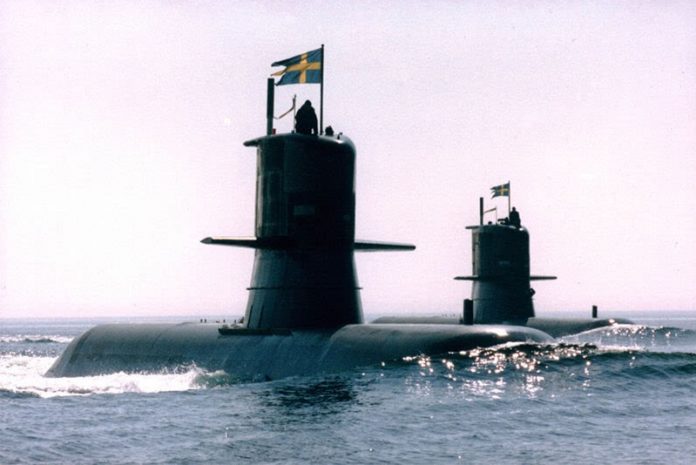Dr. Lee Willett, UDT, Stockholm – Commonality in capability for the Royal Swedish Navy’s (RSwN’s) two current submarine programmes is helping de-risk both programmes while improving capabilities in both submarine types.
Sweden is currently building two new A26 Blekinge-class diesel-electric submarines (SSKs) while modernising two of its in-service Gotland-class SSKs (HSwMS Gotland and HSwMS Uppland), delivering a four-boat force level. With work underway on both programmes simultaneously and with several of the same new capabilities being introduced in both boats – so, de-risking these capabilities for A26 – the A26 programme is effectively a four-boat programme, Hans Egonsson, programme manager for the Gotland mid-life upgrade (MLU) at Sweden’s defence materiel organisation FMV, told the Undersea Defence Technology conference in Stockholm on 14 May.
Rear Admiral Odd Werin, FMV’s Director Naval Systems, told the conference the A19 programme “is actually the test rig for the A26 in many ways”.
The RSwN’s two A26 boats are scheduled to arrive in the 2024-25 timeframe. Work on the two A19 boats, which is scheduled to take just over three years per hull, will see service life extended out to 2025. Egonsson added the current A19 upgrade work enables the boats to be operated out towards 2030, but a political decision would be needed to extend operational life out to this point.
RSwN chief Rear Admiral Jens Nykvist earlier told the conference of his aspiration for a six-boat force level. On 14 May, Sweden’s Defence Commission published its latest report on future defence planning, a report that provides guidance for budget planning over the 2019-24 period: the report recommended increasing submarine force levels to five by conducting an MLU on the third Gotland boat (HSwMS Halland); it also recommended extending Gotland-class operational life to 2030. As regards modifying the third boat, Egonsson said “if there is a political decision to move up to five submarines, I am expecting … the task to modify the third one”.
Rear Adm Werin noted that (assuming such a plan is implemented) Sweden will need to start thinking in the 2021-25 timeframe about what comes after the Gotland class.
In terms of commonality in capability across the two types, this includes: on the platform side, the submarine command and integrated platform management systems, the Stirling air-independent propulsion system, and signature improvements; and on the combat system side, the combat system infrastructure, the combat management system, and optronics, electronic support, communications, navigation, and active/passive sonar systems (although the A19 boats will have a different bow sonar array).













